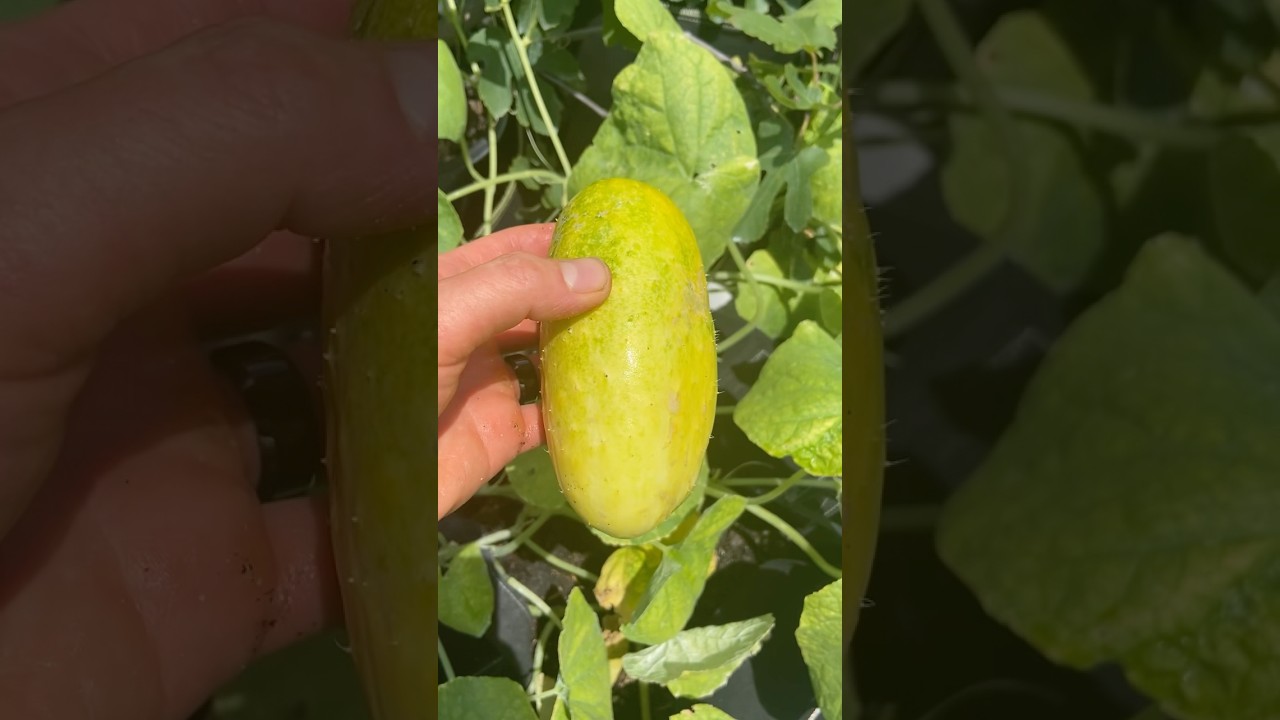Are you passionate about growing healthy, vibrant cucumbers in your garden? If so, it’s crucial to be aware of a common mistake that could be silently jeopardizing your success. In this post, you’ll learn about the mistake that can destroy your cucumber plants and how you can avoid it to ensure a bountiful harvest.
Introduction
Picture this: you’ve planted your tiny cucumber seedlings with all the hope and patience of a first-time parent. Every morning’s ritual involves peering beneath the leaves, fingers gently brushing the dirt, whispering promises of a lush, vine-ripened harvest. Yet, despite your tender care and lofty ambitions, those cucumber plants start to droop, turn yellow, or stubbornly refuse to produce so much as a humble pickle. Somewhere along the way, a crucial mistake—one that’s often made even by the most seasoned gardeners—can sneak in and sabotage your cucumber crusade.
It’s a tale as old as gardening itself. You tend to your plot meticulously, following all the tips you read online about watering, fertilizing, and pest control. Still, something compels you to overlook the silent, sneaky error lurking within your care routine. In the world of cucumbers, one common mistake can mean the difference between a thriving, productive vine and a sad, fruitless endeavor. The good news? Once you identify this blunder, you can steer your cucumber plants back toward the lush, sprawling success they deserve. Let’s peel back the curtain on this elusive pest—the blueberry on the cupcake of gardening mistakes—and learn how to keep your cucumbers climbing higher and tasting sweeter than ever.
The Hidden Villain: Overwatering and Its Sinister Consequences
Imagine overwatering your cucumber plants like pouring a river into a tiny sandbox. At first, you might think, “More water equals happier plants,” but in reality, you’re guilty of drowning them—literally. Excessive watering suffocates the roots by flooding the soil with water, leaving precious little oxygen. It’s a classic case of too much of a good thing turning downright disastrous. Your once-promising cucumber patch can quickly go from verdant paradise to a swampy wasteland where roots rot and diseases thrive.
The symptoms reveal themselves in a slow, heartbreaking decline: yellowing leaves, wilting despite moist soil, and stunted growth. It’s as if your plants are desperately gasping for air beneath a pile of waterlogged soil. This is particularly insidious because the signs mimic other problems, like nutrient deficiencies or pests, making overwatering particularly tricky to diagnose. Your best bet is to check the soil’s moisture—because if it’s damp or soggy, your cucumber vines are grievously overhydrated.
But how does this happen? Often, it’s a matter of enthusiastically tossing water on the plants no matter the weather forecast. An overzealous gardener might think, “A little more water can’t hurt,” especially in those parched summer weeks. Yet, nature’s balance is delicate, and cucumbers prefer their roots to breathe as much as they do. The goal is to keep the soil consistently moist but never soaked—like a gentle sponge, not a soggy sponge. Recognizing and correcting this common mistake is vital to nurturing a thriving cucumber crop.
The Consequences of Ignoring Proper Drainage
Poor drainage—often the silent accomplice of overwatering—can turn your cucumber dreams into a soggy nightmare. Think of your garden bed as a fine-tuned ballet dancer; if the floor is slippery or uneven, everything falters. When water isn’t draining away efficiently, roots sit in standing water, creating a perfect storm for fungal infections like root rot and a variety of micronutrient deficiencies. Over time, these issues gnaw at the very foundation of your plant’s health, resulting in pale, sad-looking vines that refuse to fruit.
It’s almost poetic how right drainage can be the difference between a bountiful cucumber harvest and an epic fail. Without proper soil structure—think organic matter, sand, and compost blended just right—your tender young plants become trapped in a quagmire. The roots can’t penetrate deeply, and the plant’s ability to absorb nutrients diminishes sharply. The result? Stunted growth, withering leaves, and a sad, drooping appearance that could make even the most optimistic gardener despair. It’s like trying to thrive in a swamp—beautiful idea, terrible execution.
To avoid this watery trap, gardeners often overlook the importance of preparing their soil properly. Incorporating organic amendments, creating raised beds, or installing drainage systems can make all the difference. Cucumbers love well-drained soil, and giving them a bed that lets excess water escape ensures their roots stay happy and healthy, capable of delivering that crisp, succulent flavor we all crave. Ignoring these fundamentals amplifies the damage of overwatering, and in the end, no amount of fertilizer or sunshine can save a plant drowned in its own ambitions.
How To Correct the Mistake And Cultivate Cucumber Success
Realizing you’ve been guilty of overwatering is the first step — the moment when your gardening journey becomes a quest for redemption. Start by checking your soil’s moisture levels with a simple finger test: stick your finger in the ground up to the second knuckle. If it feels soggy or muddy, your plants are suffering from too much love — and perhaps a touch of neglect in the drainage department. Allow the soil to dry out slightly before watering again, bearing in mind that cucumbers prefer a consistent, moderate moisture level rather than erratic dousing.
Adjusting your watering habits can be as straightforward as changing your schedule. Instead of routine, heavy watering, opt for deep, infrequent sessions that encourage roots to grow downward in search of water—like a curious explorer digging for treasure. Mulching around your cucumber plants helps retain soil moisture and prevents the water from evaporating too quickly, giving you a more manageable, steady hydration rhythm. Plus, mulching also keeps weeds at bay and temperature fluctuations in check—double whammy benefits for the overenthusiastic gardener.
Finally, give serious thought to soil enhancement. If your current bed drains poorly, consider adding coarse sand or organic matter to lighten the soil structure. Elevated beds or containers with proper drainage holes are game changers, turning soggy confusion into dry, happy roots. You might even find that your cucumber plants respond with vigor—vines sprawling eagerly and flowering prolifically, promising a future filled with satisfying crunch and garden pride. It’s all about balance; knowing when to water, how much, and where to find the sweet spot between under and overwatering.
Frequently Asked Questions
Q1: How can I tell if I’ve been overwatering my cucumber plants?
When cucumber plants are overwatered, their leaves often turn yellow or become limp, and the soil feels consistently wet or soggy—even days after watering. Roots may show signs of rot if checked, and the overall plant can appear sluggish or wilted despite apparent moisture. Using your finger to test the soil’s dampness provides quick clues, along with observing the state of the foliage and growth patterns.
Q2: What are the best drainage methods for preventing overwatering?
Implementing raised beds, adding organic matter like compost to improve soil structure, and ensuring containers have proper drainage holes are effective strategies. Mulching helps maintain consistent moisture and shields the roots from water pooling. If working with heavy clay soil, amending it with coarse sand or perlite can significantly boost drainage capacity, transforming a swamp into a well-oiled machine for healthy roots.
Q3: How often should I water my cucumber plants?
Cucumbers prefer consistent moisture, roughly 1 to 2 inches per week, but the frequency depends on weather and soil conditions. During hot, dry spells, more frequent watering may be necessary, while cooler, rainy periods require less attention. It’s best to deep-water infrequently rather than shallowly daily, encouraging roots to grow deep and resilient.
Q4: Can overwatering cause other problems besides root rot?
Absolutely. Excess water can wash away essential nutrients, leaving your plants deficient and even more stressed. It can also promote fungal diseases like powdery mildew or downy mildew, which thrive in humid, poorly-drained environments. Additionally, overwatering weakens plant health overall, making cucumbers less productive and more vulnerable to pests.
Q5: What signs indicate my cucumber vines are underwatered instead of overwatered?
Underwatered cucumbers usually show wilting leaves that perk up after watering, with dry, cracked soil. The plants may appear stunted or have leaf edges curling upward. Unlike overwatering, their soil will feel dry several inches below the surface, and roots tend to be dry and brittle if checked. Monitoring soil moisture regularly can help distinguish between the two issues.
Final Thoughts
Cucumbers are the Zingy comedians of the garden world—they thrive on proper care, but let’s face it, they also throw tantrums when neglected or pampered excessively. The common mistake of overwatering may seem innocuous, almost maternal, but in reality, it’s akin to smothering your plants out of love. Achieving that delicate balance—neither parched nor drowned—is the secret sauce to cultivating those crisp, cool cucumbers we dream of biting into on hot summer days.
Gardening, after all, is a dance of patience, observation, and sometimes a dash of humility. Recognize the signs, adapt your habits, and remember that sometimes less truly is more. With a little mindfulness about drainage and moisture, you’ll soon find your cucumber plants thriving with vigor, offering a bounty that’s as satisfying to nurture as it is to harvest. Happy gardening, and may your vines be lush, your harvest plentiful, and your lessons learned as sweet as that first ripe cucumber.

